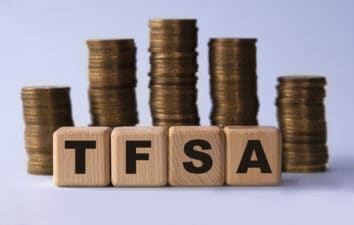Manulife Financial Corp. (TSX:MFC)(NYSE:MFC) and Sun Life Financial Inc. (TSX:SLF)(NYSE:SLF) are two of the three biggest life insurers in Canada, but that’s not all. They also provide insurance and wealth-management products and services in the United States and Asia.
Sun Life has been a stronger performer recently. Its shares are 1.5% higher than they were a year ago and 55% higher than they were five years ago. Comparatively, Manulife is 23% lower than it was a year ago and 11% higher than it was five years ago.
Does this mean Sun Life is a better buy?
Let’s first look at the recent business performance of Sun Life and Manulife.
First-quarter results
In the first quarter, Manulife reported core earnings of $905 million, net income of $1,045 million (44.5% higher than the first quarter of 2015), and a return on equity (ROE) of 10.8%. The strong U.S. dollar against the Canadian dollar benefited Manulife by boosting its core earnings by about 9% ($75 million).
Manulife also experienced strong top-line growth. Specifically, premiums and deposits for insurance products were $8.2 billion for the quarter, which was a growth of 8% on a constant-currency basis compared with the first quarter of 2015.
On the other hand, Sun Life’s net income was $540 million, which was 22.4% higher than the same period in 2015. It also achieved a ROE of 12.4%.
Both companies continue to be profitable; Manulife has a higher net income growth and Sun Life has a higher ROE.
Comparing the two
Valuation: At under $18 per share, Manulife trades at about 9.9 times its earnings and at a discount of about 7% from its book value. With the potential to trade at 15 times its earnings in favourable times, Manulife could be worth about $26.80 per share, indicating a discount of up to 30%.
On the other hand, Sun Life trades at about 11.3 times its earnings and 1.4 times its book value. Sun Life is fairly valued compared to its normal multiple in the last few years.
Dividend: Manulife yields 4.2% with a payout ratio of 41%. Its dividend is 8.8% higher than it was a year ago.
On the other hand, Sun Life yields 3.8% with a payout ratio of 43%. This aligns with its target payout ratio of 40-50%. Its dividend is 6.6% higher than it was a year ago.
Why Manulife trades at a discount
From a valuation perspective, Manulife seems to be a better buy because it trades at a lower multiple. However, Manulife’s depressed shares stem from its significant exposure to market and interest rate risks.
At the end of the first quarter Manulife’s policy liabilities, established for variable annuity and segregated fund guarantees, were $9,584 million.
On the other hand, in the last few years Sun Life has made efforts to reduce the impact of market and interest rates on its business by building a more diversified business and focusing on growth and higher ROE with less volatility. This is reflected in Sun Life’s stronger performance.
Conclusion
If Manulife’s multiple only expands to 13.5 (not to 15) in the next three to five years, supported by an estimated earnings growth rate of about 9%, investors can get an estimated annualized rate of return of 18-23%. However, it comes with higher exposure to market and interest rate risks, which could continue to weigh down the shares.
On the other hand, although Sun Life is fairly valued, it’s less risky and should offer a smoother ride for investors. In the medium term, it aims to increase its earnings per share by 8-10% per year on average and targets a ROE of 12-14%.
According to Sun Life’s earnings growth estimate, an investment in it today offers an estimated annualized return of 11.8-13.8%, which includes its dividend.
Investors should ask themselves if they want to take on more risk with Manulife and hope for a higher return or if they want less risk and accept a likely lower return but a smoother ride from Sun Life.








